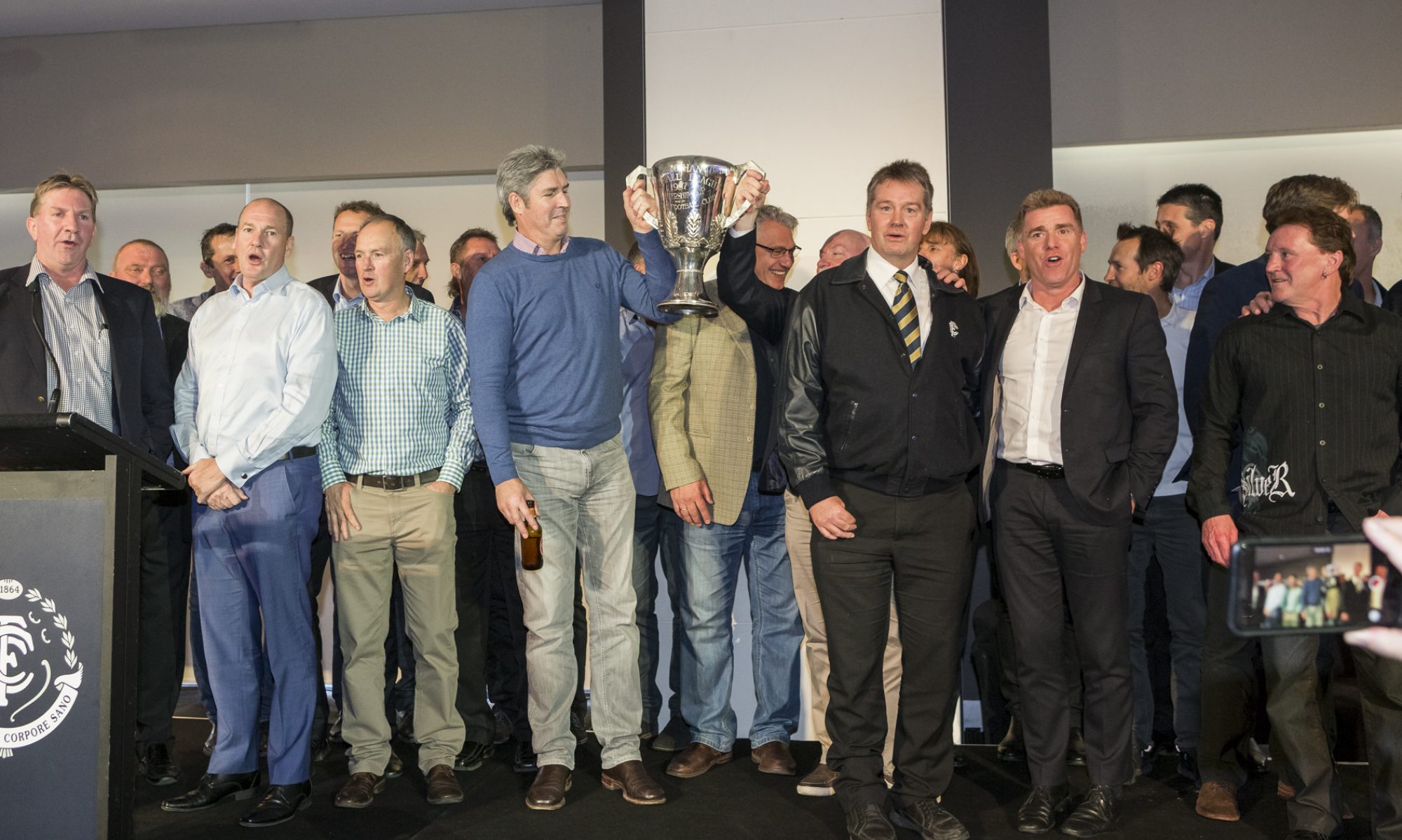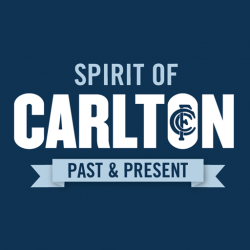
Although we were about the same height (I played at 177cm; Matthews at 178), I was a puny 68kg next to his compressed battleship frame weighing in at 86. For some reason, I thought I possessed enough silky skills, speed and footy smarts to compete with him. But pretty quickly, I realised otherwise.
This heavyset bloke was amazingly quick off the mark, agile and simply dazzling. In my face was the reality of exceptional talent executing sublime football skills. It was a painful tutorial, but at least there was a measure of how far I still had to go. But there was even more to learn. He was winning the ball regularly and I was scarcely getting a touch. And when I did – bang! A tackle that made me gasp for air and think I was going to die, and the umpire didn’t even blow the bloody whistle.
It immediately dawned on me that this bloke hated it when an opponent of any kind had the ball and would go hard and fast at him to get it back. It hurt. In a recent conversation with Matthews, he described this facet of the game involving getting the ball back from the opposition as effort.
Based on previous experience, I’m inclined to add the words: driven desire and blessed talent both ways, with and without the ball. He calls it execution under pressure, and I fully agree. Our conversation followed on the heels of comments he made recently on television and on afl.com.au.
In a website column, Matthews attributed the astronomical increases in handball numbers, often now outnumbering kicks in a game, to the exponential increase in interchange numbers. He wrote: “This handball footy has evolved because the pressure on the ball carrier has never been hotter. While specialist tackling numbers have honed good technique, it is the large numbers of players with the energy to surround the footy that is the main catalyst for the increased need to handball because of the difficulty in finding space to deliver an unpressured kick … “It is the use of the interchange bench to rest players regularly that enables them to play with such high energy in their spurts on the field.”
As a four-time premiership coach (with Collingwood in 1990 and the Brisbane Lions in 2001-03), Matthews explained the basis of his coaching philosophy: “My chief role was to influence talent to make the effort when it got harder, when an opponent had the ball,” he said. “At the Lions, we placed a lot of emphasis on tackling numbers. Most important was also the type of tackles, which we reviewed in video post-match.
These included our highly rated categories of special tackles in active play and missed tackles, along with the trapping-type tackles.” His other highest priority was execution. “Assuming the effort was there, the result of the game invariably hinged on how well the individual talent and the team executed when they had the ball,” he said.
Consequently, he believes one of the keys to coaching is to make sure the available talent is in the right place at the right time. He mentioned on Channel Seven recently that too much emphasis is being made of the concept of a ‘game-plan’, at the expense of the idea of execution.
He suggested the term is a convenient one being used more as way of promoting the game and not explaining it. “It’s mystifying the game,” he said. “What coaches and commentators are fond of calling a game-plan is perhaps better described as strategies, themes, principles and team rules.” When champions such as Matthews are hunting you down, there is no time to follow a script. You can only execute the best you can, and when he’s got the ball, hopefully reciprocate.
Ted Hopkins is a Carlton premiership player and founder of Champion Data. His current project is TedSport, a high performance data analysis and consulting service.
This column was first published in the AFL Record. Copyright AFL 2010.


 When members of the Victorian Mounted Rifles 5th contingent enrolled for the Second Boer War in February 1901, leaving for South Africa in mid-February, Sarkies went with them.
When members of the Victorian Mounted Rifles 5th contingent enrolled for the Second Boer War in February 1901, leaving for South Africa in mid-February, Sarkies went with them. The Spirit of Carlton recently held it’s annual Golf Day on the 3rd of February this year. The day is designed to bring Carlton past and present day players together to help re-affirm and enhance the culture of the Carlton Football Club.
The Spirit of Carlton recently held it’s annual Golf Day on the 3rd of February this year. The day is designed to bring Carlton past and present day players together to help re-affirm and enhance the culture of the Carlton Football Club. The day began overcast but warm and upon arrival it was clear that the Keysborough Golf Course was in magnificent condition. After registration it was off to the marquee where club legends and life members, Wayne ‘Bulldog’ Gilbert and Alan Espie were manning the BBQ with great skill. While tucking into a scrumptious hamburger a large crowd of supporters, and current and past players had gathered around and were enjoying conversation and good food.
The day began overcast but warm and upon arrival it was clear that the Keysborough Golf Course was in magnificent condition. After registration it was off to the marquee where club legends and life members, Wayne ‘Bulldog’ Gilbert and Alan Espie were manning the BBQ with great skill. While tucking into a scrumptious hamburger a large crowd of supporters, and current and past players had gathered around and were enjoying conversation and good food. The less said about the golf the better from a personal perspective. However what was fantastic was the company and comradeship of playing a round of golf with fellow Blues. Also, a wonderful effort from Joe Anderson and Steven Browne who drove the ‘drinks’ buggy all around the course offering refreshments for everyone. They must have covered many kilometres and they always seemed to turn up just at the right time when a thirst needed to be quenched.
The less said about the golf the better from a personal perspective. However what was fantastic was the company and comradeship of playing a round of golf with fellow Blues. Also, a wonderful effort from Joe Anderson and Steven Browne who drove the ‘drinks’ buggy all around the course offering refreshments for everyone. They must have covered many kilometres and they always seemed to turn up just at the right time when a thirst needed to be quenched. After the golf it was time for dinner and the pre dinner drinks and nibblies at the bar were most welcome for some weary golf legs. Once again the room was awash with premiership glory.
After the golf it was time for dinner and the pre dinner drinks and nibblies at the bar were most welcome for some weary golf legs. Once again the room was awash with premiership glory. After being welcomed by Geoff Soutby and MC, Drew Morphett the guests were treated to excellent speeches by Michael Sexton and Chris Judd. The night also featured some comedy from Ray Gilson and an Auction to raise further money for the players. The spirit in the room was one of great joy and friendship topped off by a magnificent rendition of the Club Song which the whole room heartily sang lead by Stephen Kernahan, Geoff Southby, Robert Walls and Jimmy Buckley. Not a bad chorus there with 10 premiership medallions between them.
After being welcomed by Geoff Soutby and MC, Drew Morphett the guests were treated to excellent speeches by Michael Sexton and Chris Judd. The night also featured some comedy from Ray Gilson and an Auction to raise further money for the players. The spirit in the room was one of great joy and friendship topped off by a magnificent rendition of the Club Song which the whole room heartily sang lead by Stephen Kernahan, Geoff Southby, Robert Walls and Jimmy Buckley. Not a bad chorus there with 10 premiership medallions between them. Congratulations to the team lead by Matthew Lappin who took out the days major prize with an excellent round of golf. As you can see they were happy with the win and by the sound of Matthew Lappin’s speech they are hungry for another win in the 2010 golf day.
Congratulations to the team lead by Matthew Lappin who took out the days major prize with an excellent round of golf. As you can see they were happy with the win and by the sound of Matthew Lappin’s speech they are hungry for another win in the 2010 golf day. The Spirit of Carlton would like to thank all the sponsors for helping make the day possible in particular the primary sponsors of the Golf Day,
The Spirit of Carlton would like to thank all the sponsors for helping make the day possible in particular the primary sponsors of the Golf Day, 